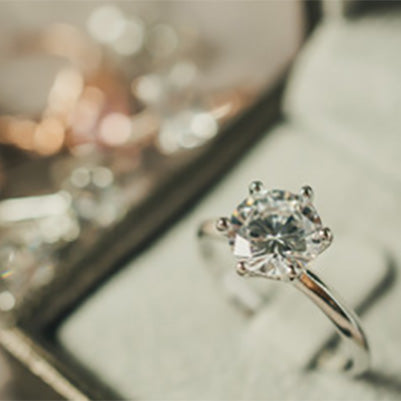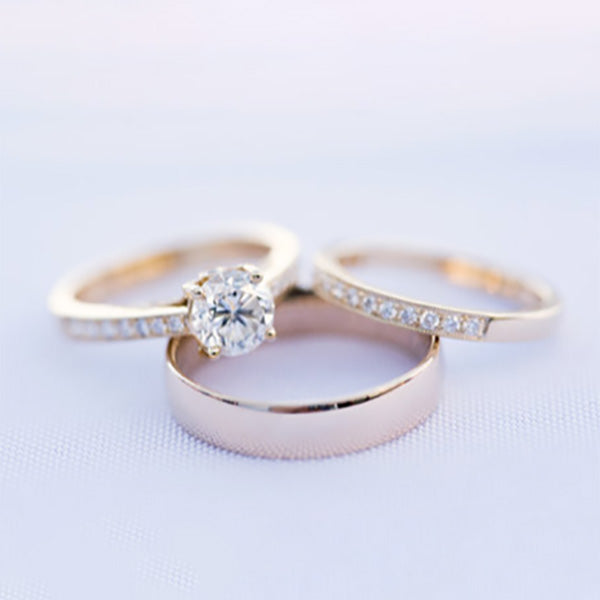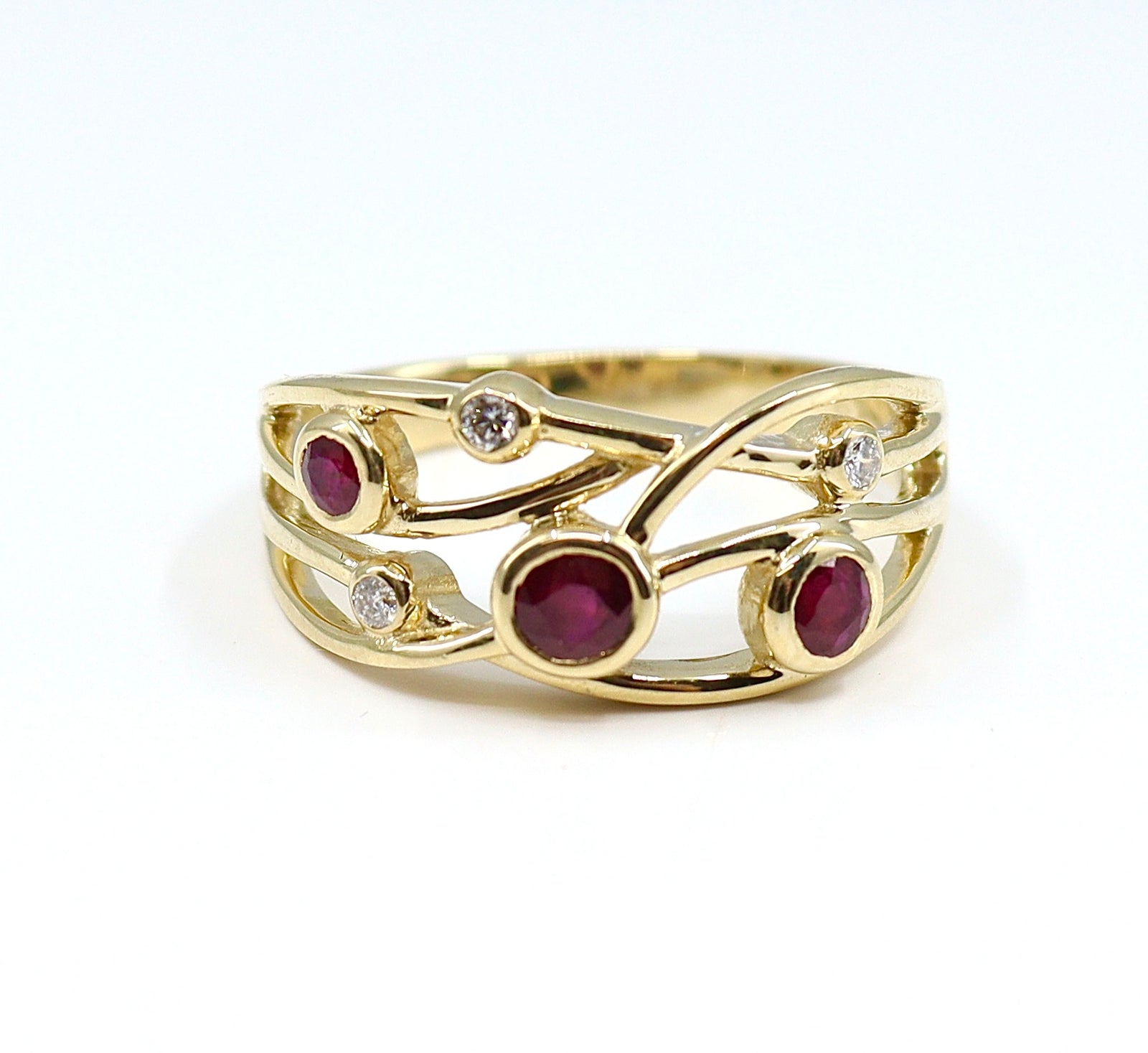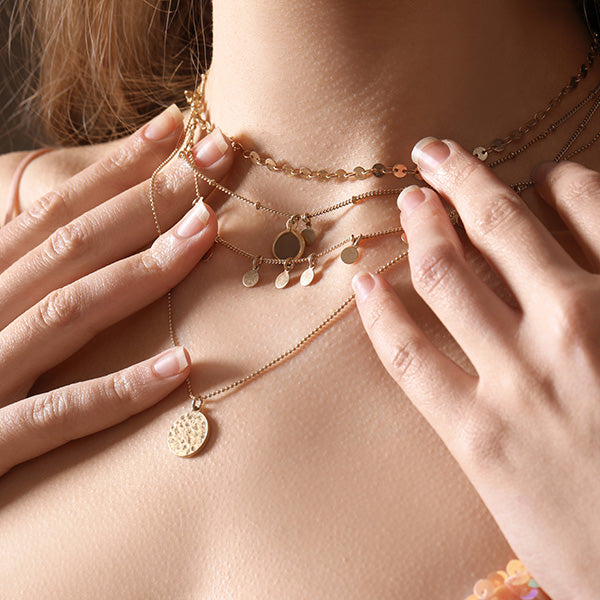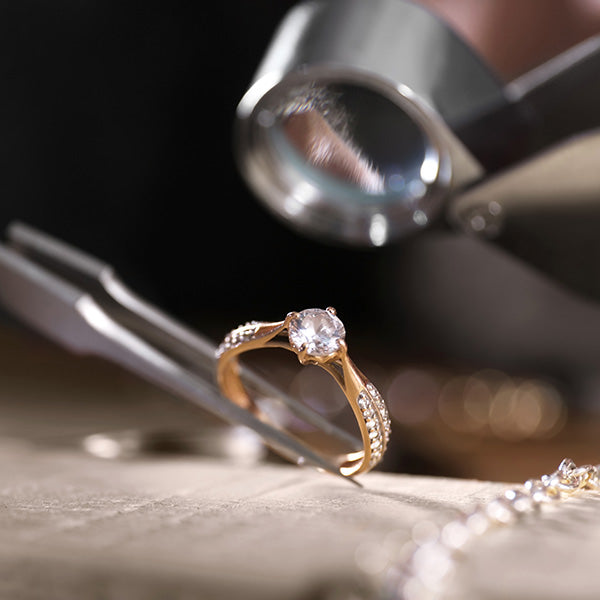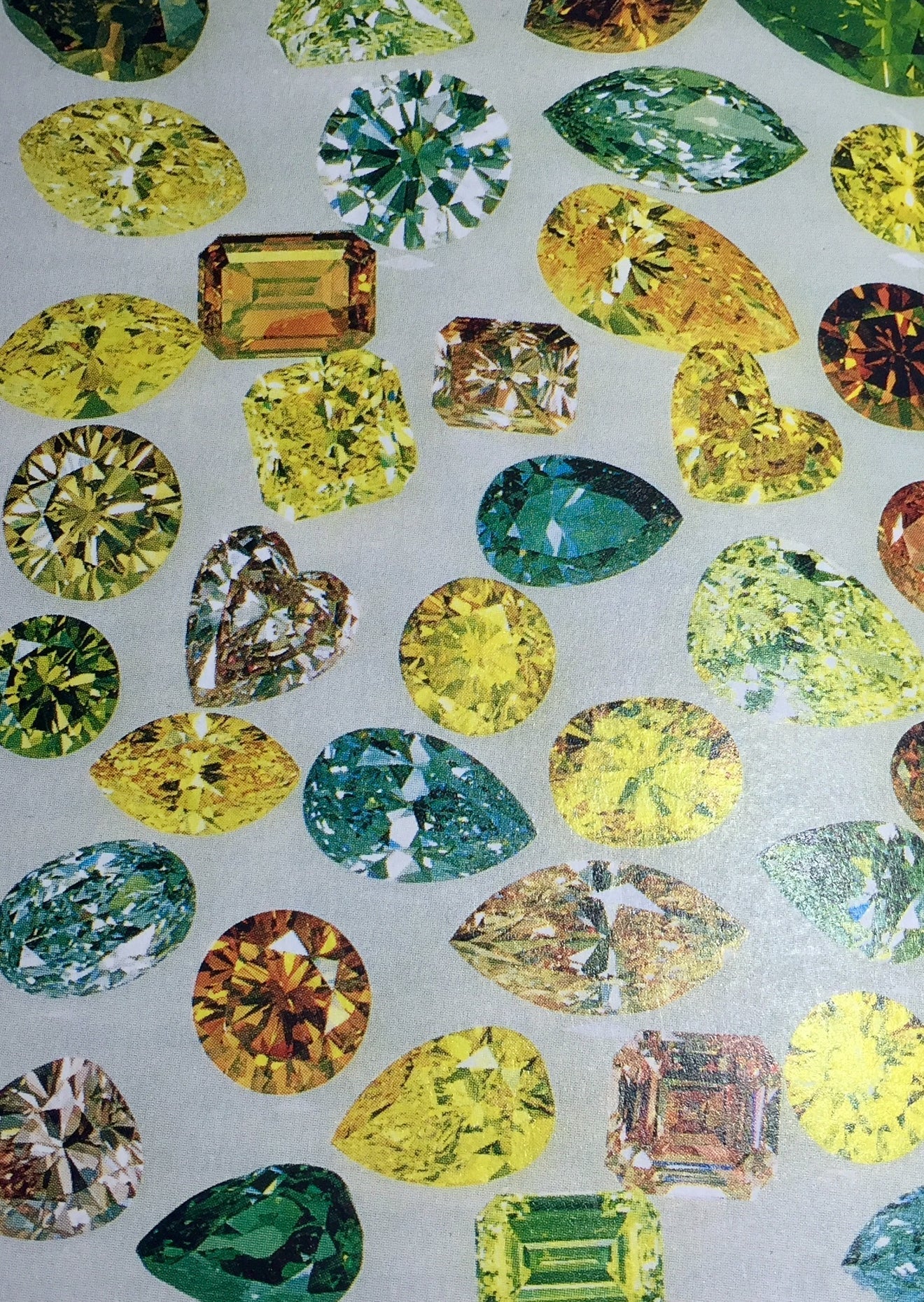Natural fancy colour diamonds
Most diamonds that are extracted from the earth are colourless to a light yellow (D to Z) Fancy colour diamonds go off this scale and have a deep distinct and rich colour. Diamonds of all colours can be found in nature, such as yellow, green, blue, purple, orange, brown, black and red. They are each a phenomenon of nature, revealing themselves on incredibly beautiful shades and hues.
Unlike colourless and near colourless diamonds which are valued for their lack of colour, fancy coloured diamonds are valued for the intensity and distribution of theirs. These diamonds are extremely rare and tend to be found mostly as small stones weighing less than a carat. It is estimated that there is one fancy coloured diamond for every ten thousand near-colourless ones.
The formation of natural colour diamonds requires not only the special conditions deep within the earth’s mantle for the creation of all diamonds, but also the presence of additional trace elements and distortions to the typical diamond crystal. If an element interacts with carbon atoms during the formation of a diamond, the diamonds colour can change. Radiation and pressure on a diamonds structure will also have an impact on colour,
As with all coloured gemstones, colour is caused by partial or total absorption of the visible light spectrum, with lines within the spectrum revealing which areas are being absorbed and therefore suggesting the mineral present. Lets take a look at some of the coloured diamonds on the market......
Yellow diamonds
Yellow diamonds are formed with varying degrees of nitrogen impurities (in N or N3 form) in the carbon lattice. They are type 1a, 1b or subtypes. With absorption lines at 415nm (N3) and 478nm (N2). These diamonds may fluoresce blue under LWUV.
Diamonds referred to as canary yellow are the rarest type of yellow diamonds. The most popular hues are the fancy intense and fancy vivid with a bright, pure shade and no hints of green, brown or red to darken the stone.
GIA grades fancy yellow diamonds by the intensity of the colour, they are either; fancy light yellow, fancy yellow, fancy intense yellow or fancy vivid yellow.
Large gem quality diamonds with beautiful intense yellow colour have been discovered and mined primarily in South Africa, but also in other African countries, in Brazil, Russia, Australia and India
The Golden Jubilee has been recognized as the world’s largest faceted diamond since 1995. The 545.67carat gem has been offered to the King of Thailand by a group of Thai business men to celebrate the kings 50 years as monarch and only awaits fund raising to permit the gift to occur
Blue diamonds
Type 11b. The colour of blue diamond is caused by the presence of boron atoms, the boron occurs as isolated atoms replacing carbon atoms randomly throughout the crystal structure, which causes absorption in the red region (peaks at 3568nm and 2444nm), these stones may fluoresce red under SWUV.. The higher the concentration of boron, the more intense the colour, presents of Boron makes these diamonds electrical semi-conductors. Some exceptional and very rare turquoise and aquamarine coloured diamonds with extremely brilliant appearance have been found to be coloured because of their long exposure to natural radiation found in Guyana. And in Argyle blues, which are usually grey blue, the colour is related to the presence of hydrogen and also, sometimes but more rarely, to that of nitrogen (these diamonds will not be electrically conductive).
The Cullian and Premier mines near Pretoria, South Africa are blue diamond producing mines. A small number of deep blue diamonds have also been found in Central Africa, Brazil and Borneo. In the past, some of the most historically famous blue diamonds were sourced from India. The Argyle mine in Australia extracts metallic blue diamonds.
The Hope Diamond is considered the most famous blue diamond. The 45.42ct diamond was originally sold in 1668 by French gem merchant, Jean Baptiste Tavernier to King Louis XIV of France. It changed hands many times over the years, but ultimately ended up in the hands of Harry Winston in 1949.It is now on display in the Harry Winston Gallery at the National Museum of Natural History and is the most visited item on exhibit at the Smithsonian Institution
Green diamonds
Natural fancy coloured green diamonds are the second rarest gems found in nature. The green colour is caused by millions of years of exposure to naturally occurring radiation which knock a carbon atom out of its position in the crystal structure. This damage to the crystal causes an absorption band in the red part of the spectrum with a sharp line at 741nm, this is called the general radiation line ‘GR1’. The green colour is usually only skin deep and can be lost when polishing, a skilled cutter can create a fancy green colour by causing the patches of green to reflect throughout the stone when viewed face-up.
Green diamonds are sourced from, Brazil and Guyana.
Green diamonds with a full penetration of colour are very rare. The best well known one being the Dresden Green, at 41cts the Dresden Green is the largest known natural green diamond. This stone originated from India and is a type 11a with VS1 clarity and has the potential to be an IF, if it is recut. The Dresden Green gets its name from the capitol of Saxony where it has been on display for more than 200 years. The earliest known reference to its existence was in the 1700’s.
Diamonds can be irradiated to create a green colour but as the GR1 line can appear in both natural and treated stones it can be difficult to distinguish between the two even with advance lab testing. Usually natural green diamonds are not as bright as treated natural diamonds.
Pink diamonds
May be either type 1a or type 11a diamonds. Natural pink diamonds are very desirable colours; pure pink coloured diamonds with no trace of secondary modifying colours are extremely rare. The pink colour is believed to be caused by plastic deformation which is a slipping or distortion of the atomic lattice. Immense pressure applied on a diamond deep within the earth’s mantle can squash its structure, creating graining and resulting in red, pink, purple or brown stones. Some testing has also revealed traces of Manganese impurities. A broad absorption at shorter with a maximum at about 560nm is found in pink diamonds. Argyle pink diamonds have also shown absorption lines at 503, 494 and 415nm.
The Argyle mine in North Western Australia is famous for the number of pink diamonds it produces. Lighter pink diamonds have been found in India in the past, and today Borneo, China, Brazil, Guinea, Angola, South Africa and Tanzania have been known to produce small quantities of notable pink diamonds.
The Hortensia diamond is the most famous pink diamond found, it has a light orangey pink colour and is 20carats. It was added to the French crown jewels by King Lewis XIV, the diamond has a good clarity but has there is quite a large scratch on the pavilion. The diamond is rather flat and rectangular in shape and is cut on five sides.
Red diamonds
Red diamonds are the rarest of the coloured diamond collection and only a handful have ever received the grade of fancy red. Red diamonds are also thought to be coloured by plastic deformation. There are brownish red, pinkish red and purplish red diamonds, but these diamonds are extremely rare and their prices reflect their scarceness on the market.
The Hancock red diamond held a record for the most expensive diamond for almost 20 years. The 0.95ct diamond was owned by Warren Hancock, a diamond collector and Montana rancher. He originally purchased it for $13,500 in 1956. However, in 1987, Christie's of New York sold it for $926,000 per carat.
Brown diamonds
Typically 11b’s or type 11aA/B from the Argyle mine. Natural fancy brown diamonds are sometimes referred to as champagne, lightly tinted brown, cognac or chocolate. There colour, like the pink and red diamonds, is also thought to be caused by plastic deformation, the internal parallel grain lines cause the brown colour. They usually show absorption at 503 and 494nm and usually show brown graining.
The Argyle diamond mine in Western Australia is the world’s largest producer of brown diamonds. Champagne to cognac shades are found in Australia, Brazil, Borneo, the African Continent and Russia
The Golden Maharaja diamond is a modified pear-shape, 65.57 carat, Fancy Dark Orange-Brown, VS2 clarity as certified by the GIA. It is believed the stone emanates from South Africa; however few details are known regarding its origin, date of discovery, and original owners. Similarly, the reason for its being named the ‘Golden Maharaja’ is unknown.
Black diamonds
Natural fancy black diamonds are opaque and do not show fire. The colour in black diamonds is caused by large numbers of dark opaque inclusions, some stones have been found to contain trace elements of nitrogen and hydrogen. It is also believed that some of the black diamonds fell to the earth as meteorites.
Most treated black diamonds on the market are heat andfractures are graphitized. Black diamonds that have been produced by irradiation and annealing will show a bright green colour under tungsten light.
Black diamonds are sourced from Brazil, South Africa, the Central African Republic and Borneo.
Chameleon diamonds
Chameleon diamonds are considered collectors’ items consisting of a combination of grey, yellow, olive, orange and green. They can temporarily change colour from orange to olive and yellow to orange of various strength, when heated to approximately 120°C and some of them also change colour after prolonged storage in the dark. It is thought that the colour-changing effect is due to a higher than normal amount of hydrogen impurities. There have been a number of theories recorded, but the exact cause of the colour is still not known.
Chameleon diamonds are sourced from South East Asia, mainly China, and also from the Democratic Republic of Congo, central Africa and Brazil.
The Chopard Chameleon is the largest known chameleon diamond in the world, comfortably exceeding the previous record holder in size, a 22.28 carat chameleon heart shaped diamond. The oval Chopard Chameleon has a fantastic colour and is 31.32carats.
Orange diamonds
Priced for their beauty and rarity, orange diamonds are very sought after. The colour is thought to be due to a combination of structural deformities and the presence of nitrogen in the pure carbon structure; however this has not be verified.
Purple and Violet diamonds
Natural fancy purple and violet diamonds are extremely rare; it is thought that the presence of hydrogen produces the unique violet hues. Purple and violet diamonds are found in the Argyle mine as well as Russia.
The Argyle violet was discovered by Rio Tinto, in Western Australia in 2016. The 2.83 carat rare diamond took more than 80hours to form its shape from the 9.17 carat rough diamond; which is to have looked like a meteorite with deep etching. It is thought the diamond could sell for $4million at the Argyle diamonds pink tender
I think a violet natural coloured diamond is my favourite, which one is your Favourite?
Charlotte.

